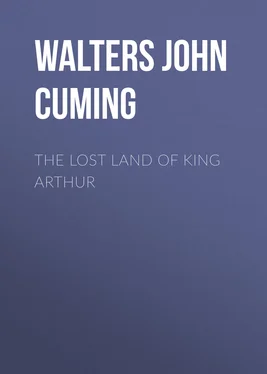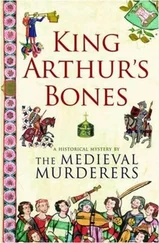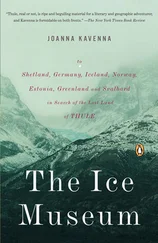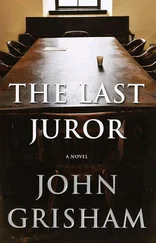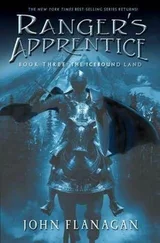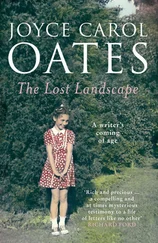John Walters - The Lost Land of King Arthur
Здесь есть возможность читать онлайн «John Walters - The Lost Land of King Arthur» — ознакомительный отрывок электронной книги совершенно бесплатно, а после прочтения отрывка купить полную версию. В некоторых случаях можно слушать аудио, скачать через торрент в формате fb2 и присутствует краткое содержание. Жанр: Путешествия и география, История, foreign_edu, foreign_antique, foreign_prose, на английском языке. Описание произведения, (предисловие) а так же отзывы посетителей доступны на портале библиотеки ЛибКат.
- Название:The Lost Land of King Arthur
- Автор:
- Жанр:
- Год:неизвестен
- ISBN:нет данных
- Рейтинг книги:3 / 5. Голосов: 1
-
Избранное:Добавить в избранное
- Отзывы:
-
Ваша оценка:
- 60
- 1
- 2
- 3
- 4
- 5
The Lost Land of King Arthur: краткое содержание, описание и аннотация
Предлагаем к чтению аннотацию, описание, краткое содержание или предисловие (зависит от того, что написал сам автор книги «The Lost Land of King Arthur»). Если вы не нашли необходимую информацию о книге — напишите в комментариях, мы постараемся отыскать её.
The Lost Land of King Arthur — читать онлайн ознакомительный отрывок
Ниже представлен текст книги, разбитый по страницам. Система сохранения места последней прочитанной страницы, позволяет с удобством читать онлайн бесплатно книгу «The Lost Land of King Arthur», без необходимости каждый раз заново искать на чём Вы остановились. Поставьте закладку, и сможете в любой момент перейти на страницу, на которой закончили чтение.
Интервал:
Закладка:
The “guarded Mount,” dedicated to St. Michael, overlooks the long Atlantic waves, the waste of waters, and “towards Namancos and Bayona’s hold,” and this Ultima Thule is thronged with traditions of Arthur and his lost territory. Grim, cavernous Pengwaed, or Land’s End, with its granite rocks; the Lizard, and Penzance, the last town in England, are all stored with these old memories; and the waves flooding the bays tell of that younger time over which hangs perpetual shadow. This is the Lyonnesse of Tennyson’s imagining, the
“Land of old, upheaven from the abyss
By fire, to sink into the abyss again,”
where long hillocks dip down to the sea-line, where the coast spreads out into shifting treacherous sand, and where amid the dreary plains the Silures fought their battles for life and freedom. 6 6 By some Lyonnesse is identified with Léonnois in Brittany, but as Mr. Aldis Wright has pointed out, the continuous references in the romance to “riding” from Lyonnesse to other parts of Cornwall shows that Lyonnesse and Cornwall were on the same land.
At Vellan, Arthur slaughtered so many Danes that the mill next day was worked with blood. Land’s End still shows its “Field of Slaughter,” and by the coast Arthur and Mordred met during the last conflict. Lyonnesse may have included Armorica also, still rich with its incomparable traditions and its unsurpassed folk-songs. For once the people of Brittany, Cornwall, and Wales, speaking practically the same tongue, lavished all their poetic wealth upon the Arthurian cycle of legendary history, claimed the knights in common, and each still claims to possess the more famous shrines. Merlin’s forest thus becomes a part of Lyonnesse; Joyous Gard (as we shall presently see) can still be found in Brittany, instead of Northumberland; and Avalon, instead of being a pilgrim’s resort in Somerset, is an island off the Breton coast, seen dimly from the wild moorland country, strewn with dolmens, and reaching down to a shore of silvery sands. Between the orange-coloured rocks “the sea rushes up in deep blue and brilliant green waves of indescribable transparency. On a bright summer day the whole scene is one of unspeakable radiance. Delightful little walks wind round the western headland, where more groups of rock appear, as weird and fantastic as the first.” 7 7 A. J. C. Hare’s North-Western France .
And across the stretch of azure sea lies the dim islet which Breton legend affirms is King Arthur’s resting-place. When we consider the French sources of the history compiled by Geoffrey, Wace, and Map, the reasonableness of believing that Avalon was at first located in Brittany becomes at once apparent, and the wonder is that in this and many other cases the transference of the scenes to England should have been so complete or that English equivalents should have been so readily accepted.
The more obscure names of places would doubtless be identified if the search were more assiduous in Brittany than in Britain, and if the original Breton nomenclature were used as a basis. Tristram, Iseult, and Lancelot at least are French, and the prevailing tone of the romances in which they figure is French; we must look to Brittany for some part of the scenery. 8 8 “Il est donc constant que la chevalerie prit naissance en Bretagne,” says Emile Souvestre, “et y brilla de tout son éclat; que les premiers poémes chevaleresques furent écrits en langue celtique. Les monuments, les traditions, les noms , les indications des plus anciens auteurs s’accordent pour faire de la Bretagne la patrie de tout ce monde chevaleresque et féerique dont, plus tard, le Tasse et l’Arioste tirèrent tant de parti.”
At various times it has been stated that Sir Lancelot’s Joyous Gard was none other than Alnwick, or else Bamborough Castle, in Northumberland, a structure which dates from the year 554, and may have been the site of an earlier stronghold. 9 9 Bamborough Castle, says Professor Burrows, was the centre of the Kingdom of Bryneck, or Bernicia. “In founding it the Angles encountered a determined opposition at the hands of a British chief named Arthur. Whether he is the same as the Arthur of South-Western Britain, or whether the exploits of one have been transferred by legend to the other, is still under dispute.”
But why Sir Lancelot, a Breton Knight of Arthur’s Court, whose exploits are confined to Lyonnesse, the southern portion of King Arthur’s territory, should have had his castle located in the north cannot be determined, unless we so far revise our opinions as to credit (as some have done) the existence of a Scotch knight of that name. Instead of looking to Northumberland for Sir Lancelot’s stronghold, and endeavouring to identify Bamborough as his residence, why not turn straightway to France, his native land, and accept such facts as are there to be found? The chronicle of Malory itself says that Joyous Gard was “over sea.” Beyond the forest of Landerneau may still be seen the traditional site of a Chateau de la Joyeuse-Garde, with an ancient gateway and a Gothic vault of the twelfth century remaining. Here at least we find the name; the Breton regards the spot as that which Lancelot, the Breton knight, claimed as his own; and the scene is in that Armorica from which the original traditions sprang, or, at least, where they took earliest root. 10 10 According to Villemarqué the name of Lancelot is a translation of that of the Welsh hero Maël, who exhibits the fullest analogy with the Lancelot of the French romances.
In addition to Joyous Gard, Brittany boasts of its Tristan Island in the Bay of Douarnenez, named after the “Tristan des Léonais” who was the rival of King Mark. King Mark, too (“Marc’h,” in the original, signifying horse, and so named because of his pointed ears), has his own locality, for according to Breton legend he was not ruler of Cornwall but of Plomarc’h, which place lies a little to the east of Douarnenez and contains the ruins of his “palace.” But Renan justly inquired, if Armorica saw the birth of the Arthurian cycle, how was it that we failed to find there any traces of the nativity?
Cameliard is a tract in some respects not so hard to define or locate as Lyonnesse. The town of Brecknock, three miles from which is Arthur’s Hill, seems to have marked one of its borders, and its capital was a now undiscoverable city, Carohaise. Ritson believes that Arthur’s kingdom could not have been considerable, and he is disposed to grant him the lordship only over Devon and Cornwall, with perhaps some territory in South Wales, the land called Gore or Gower. Be that as it may, his name, by a series of links, extends from Cornwall to Northumberland, from the Scillies to London, and from London to Carlisle. The British tribe, the Silures, to which Arthur belonged, occupied the region now divided into the counties of Hereford, Monmouth and Glamorgan. Brecknock and Radnor may have been added, and it is certain that Arthur had supreme dominion over Cornwall and part of Somerset and Devon. Any “kings” of these places, such as Erbin, father of Geraint, must have been tributary to him. Tacitus has left us an account of the valour, the determination, and the warrior qualities of the Silures, who had Iberian blood in their veins. It was after the Roman and Saxon invasions that they removed their seat of Government from London to Siluria, Arthur having his court at Caerleon. The Britons were a Christian race, for that religion had been introduced among the Latinised Brythonic tribes before the end of the second century. This race prevailed over the Goidels and Ivernians in the territory, and on the recall of the Roman legions one of the Brythons succeeded the Dux Britanniarum and thus became the head of the Cymry (or Cambroges, “fellow-countrymen”). Saxon Cerdic and his son Cymric for twenty years found it impossible to break through the forest districts west of the Avon, which formed the outwork of the British forces; and we may almost take it for granted that at one time the whole of the west country was in Arthur’s power, a line from Liddlesdale in the north to the southern extremity of Lyonnesse, taking in Cumberland, Wales (and perhaps Staffordshire and Shropshire), Devon and Cornwall, roughly marking the boundary. But his reported excursions north of the Trent and to the east counties would also lead to the inference that for some time the tribe overran the major part of the country. Hence we can account for the large number of scattered memorials of the monarch found in all parts of the land, though superstition may have attached his name to many places where he was absolutely unknown. Arthur’s Seats, or Quoits, abound. They are to be found both in North and South Wales, and the name seems to have been given to any rock or commanding situation which in the popular fancy was fit to bear it. In Anglesey, in the wooded grounds of Llwyliarth a seat of the Lloyd family, a rocking stone, the famous Maen Chwf, is called Arthur’s Quoit. Cefn Bryn ridge in Glamorganshire, an imposing elevation, is crowned with a cromlech, together with numerous cairns and tumuli. The cromlech, known as Arthur’s Stone, is a mass of millstone grit fourteen feet long and seven feet two inches deep, and rests upon a number of upright supporters each five feet high. In the Welsh Triads this cromlech, which is near the turnpike road from Reynoldstone to Swansea, is alluded to as “the big stone of Sketty,” and it ranks as one of the wonders of Wales. Another such stone is to be found in Moccas parish, Herefordshire, the cromlech in this case being eighteen feet long, nine feet broad, and twelve feet thick, and supported originally by eleven upright pillars. The colossal king was to have colossal monuments. Brecknockshire has several imposing memorials of Arthur. Five miles south of Brecon rise the twin peaks of the mountain range, and they are designated Arthur’s Chair. A massive British cromlech adjoining the park of Mocras Court is called Arthur’s Table. On the edge of Gossmoor there is a large stone upon which are impressed marks resembling four horse-shoes. Tradition asserts that these marks were made by the horse King Arthur rode when he resided at Castle Denis and hunted on the moors. Between Mold and Denbigh is Moel Arthur, an ancient British fort, defended by two ditches of great depth. At Rhuthyn (Ruthin) in the vicinity King Arthur is said to have beheaded his enemy Huail (Howel), to whom Gildas refers. The record might be extended indefinitely, though no valid argument can be based upon any of the facts. The indiscriminate use of Arthur’s name often shows an extravagance of imagination and a reckless disregard of what is appropriate. Between Mold and Ruthin, for instance, is Maen Arthur, a stone which popular fancy has adjudged to bear the exact impression of the hoof of the king’s steed. There is something like substantial reason for believing that the British hero was connected with Monmouth, Cardiff, and even with Dover, and either the Arthur of the Silures or another British chief seems to have reached Carlisle—that is, if the chronicles did not confuse Cardoile with Carduel. The Cumbrian Arthur figures in two ancient ballads, “The Marriage of Gawaine,” and “The Boy and the Mantle,” while Scott’s poem of Arthur and his Court at Carlisle is, of course, too well known to need more than a reference. In the time of Baeda Carlisle was known as Lugubalia, which name by corruption became Luel. The British prefix Caer, a stone fort, made the name Caer-Luel, and as such it was long known. It gradually degenerated into Carliol, and finally became Carlisle. That the ancient city should have become confused with Caerleon is natural and explicable. Yet Arthur’s connection with a portion of the north is strongly insisted on. Where Wigan now stands he fought a famous battle. Pendragon Castle in Westmoreland claims him as its founder; and passing by easy stages we find ourselves confronted with a Northumbrian Arthur. From this point the transition to Scotland itself is extremely easy, the lowland part of that country being claimed as the veritable Cameliard.
Читать дальшеИнтервал:
Закладка:
Похожие книги на «The Lost Land of King Arthur»
Представляем Вашему вниманию похожие книги на «The Lost Land of King Arthur» списком для выбора. Мы отобрали схожую по названию и смыслу литературу в надежде предоставить читателям больше вариантов отыскать новые, интересные, ещё непрочитанные произведения.
Обсуждение, отзывы о книге «The Lost Land of King Arthur» и просто собственные мнения читателей. Оставьте ваши комментарии, напишите, что Вы думаете о произведении, его смысле или главных героях. Укажите что конкретно понравилось, а что нет, и почему Вы так считаете.
